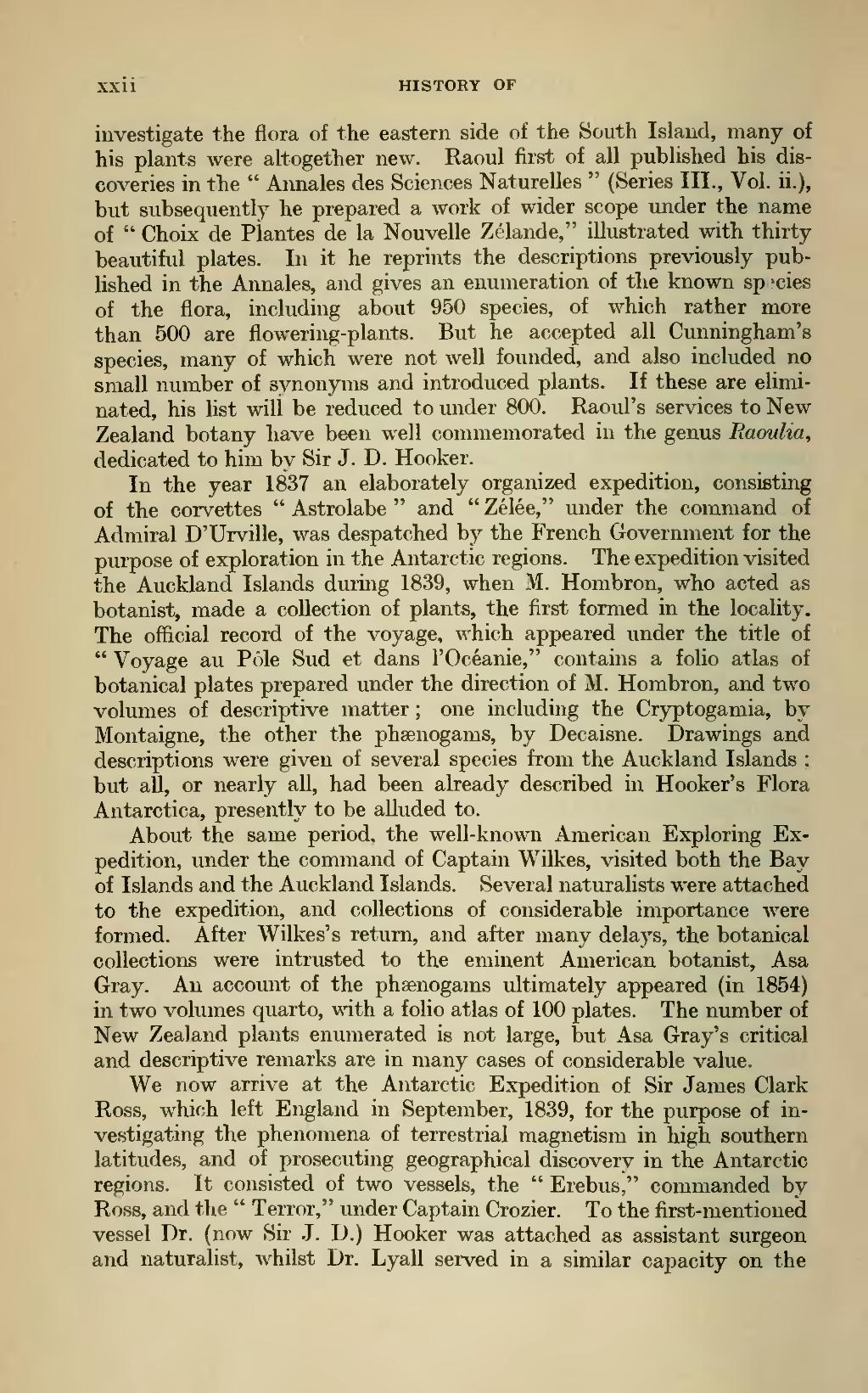investigate the flora of the eastern side of the South Island, many of his plants were altogether new. Raoul first of all published his discoveries in the "Annales des Sciences Naturelles" (Series III., Vol. ii.), but subsequently he prepared a work of wider scope under the name of "Choix de Plantes de la Nouvelle Zélande," illustrated with thirty beautiful plates. In it he reprints the descriptions previously published in the Annales, and gives an enumeration of the known species of the flora, including about 950 species, of which rather more than 500 are flowering-plants. But he accepted all Cunningham's species, many of which were not well founded, and also included no small number of synonyms and introduced plants. If these are eliminated, his list will be reduced to under 800. Raoul's services to New Zealand botany have been well commemorated in the genus Raoulia, dedicated to him by Sir J. D. Hooker.
In the year 1837 an elaborately organized expedition, consisting of the corvettes "Astrolabe" and "Zélée," under the command of Admiral D'Urville, was despatched by the French Government for the purpose of exploration in the Antarctic regions. The expedition visited the Auckland Islands during 1839, when M. Hombron, who acted as botanist, made a collection of plants, the first formed in the locality. The official record of the voyage, which appeared under the title of "Voyage au Pōle Sud et dans l'Océanie," contains a folio atlas of botanical plates prepared under the direction of M. Hombron, and two volumes of descriptive matter; one including the Cryptogamia, by Montaigne, the other the phænogams, by Decaisne. Drawings and descriptions were given of several species from the Auckland Islands; but all, or nearly all, had been already described in Hooker's Flora Antarctica, presently to be alluded to.
About the same period, the well-known American Exploring Expedition, under the command of Captain Wilkes, visited both the Bay of Islands and the Auckland Islands. Several naturalists were attached to the expedition, and collections of considerable importance were formed. After Wilkes's return, and after many delays, the botanical collections were intrusted to the eminent American botanist, Asa Gray. An account of the phænogams ultimately appeared (in 1854) in two volumes quarto, with a folio atlas of 100 plates. The number of New Zealand plants enumerated is not large, but Asa Gray's critical and descriptive remarks are in many cases of considerable value.
We now arrive at the Antarctic Expedition of Sir James Clark Ross, which left England in September, 1839, for the purpose of investigating the phenomena of terrestrial magnetism in high southern latitudes, and of prosecuting geographical discovery in the Antarctic regions. It consisted of two vessels, the "Erebus," commanded by Ross, and the "Terror," under Captain Crozier. To the first-mentioned vessel Dr. (now Sir J. D.) Hooker was attached as assistant surgeon and naturalist, whilst Dr. Lyall served in a similar capacity on the
